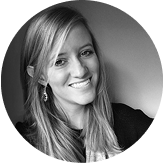Working in Copywriting: What the Day-to-Day Really Looks Like
Ever wondered what copywriters actually do all day? This post breaks down the real day-to-day—from brainstorming and writing ad copy to collaborating with creative teams. Whether you’re eyeing agency life or an in-house role, you’ll see what the job’s really like, what skills you’ll need, and how to build a portfolio that gets noticed.

So you wanna be a copywriter. But what does that actually mean once you land the job? 👀
If you’ve ever tried to google “what does a copywriter do,” you’ve probably seen a bunch of vague lines like “they write content to engage an audience.” Okay, cool, but what kind of content? For who? And how do you even start?
We got you.
This guide’s breaking down what a copywriter really does, what their daily responsibilities look like, and how to build a portfolio that gets you noticed. Let’s demystify the copywriting lore, once and for all.
What Does a Copywriter Actually Do?
Let’s keep it real: copywriters are the storytellers of the ad world. They’re not just writing cute slogans, they’re translating strategy into emotion.
Key copywriter daily responsibilities:
- Writing headlines, taglines, and ad copy that make people stop scrolling
- Drafting social posts, email campaigns, and landing pages
- Researching brand voice and audience needs
- Brainstorming with art directors, designers, and creative directors to develop campaign ideas
In short, you take the big ideas and make them clickable.
However, depending on where you work, these general copywriter responsibilities will vary. For instance, the junior copywriting experience will look a lot different from agency to agency.
Small Agencies
Small agencies are kinda like creative bootcamps—chaotic, fast, and full of opportunity. Because there aren’t as many senior-level creatives to carry the load, junior copywriters usually get tossed into a little bit of everything. You might be writing social captions one day and pitching campaign ideas to clients the next. You might be writing full scripts for commercials, or even helping out on a radio or TV commercial production.
It’s almost like being thrown into the deep end of the pool and seeing if you can float. But the good news? You’ll learn fast. Small-agency life forces you to wear a bunch of hats, which means you’ll build range and confidence real quick.
Big Agencies
At larger agencies, things tend to be more structured. You’ll usually have a clear title, a defined role, and a senior creative (or three) watching your back. That means more mentorship and feedback, but also more focus.
Junior copywriters at big agencies typically start with the smaller stuff: banner ads, paid social captions, radio scripts, that kind of thing. These projects might not sound glamorous, but they teach you how to nail tone, follow brand guidelines, and make even the tiniest piece of copy pack a punch. (And trust—writing a six-word ad that actually works is harder than it looks.) You’ll also get to work on some bigger assignments, but you’ll be one of several teams competing to sell the winning idea through to the creative director and the client. On big agency pitches, up to 10 or 20 teams could be in the first round of creative ideas.
In-House Teams
Then there’s the in-house route—working directly for a brand instead of with a bunch of different ones. In-house junior copywriters are all about mastering one voice and using it across tons of different touchpoints.
You might write web pages, blogs, internal presentations, brand decks, and email newsletters. But you’ll also get a chance to work on big, fun brand activations and ads. And because you’re so close to the brand, your job isn’t just about writing. It’s about translating the brand’s voice into something that feels fresh, human, and fun (aka not like boring corporate sales copy).
Basically, being an in-house copywriter means becoming a full-on brand translator. Think speaking fluent “consumer,” and knowing how to make even the driest content sparkle. ✨

Advertising Copywriting vs. Content Writing:
- Advertising copywriting: Emotional, persuasive, campaign-driven (think “Just Do It”).
- Content writing: Educational and long-form (blogs, SEO, newsletters).
Ad copywriters are storytellers and strategists—the ones who make words sell ideas.
A Day in the Life of a Copywriter
If you’ve ever wondered what a day in the life of a copywriter really looks like, here’s the play-by-play:
🕘 9:00 AM: Morning Prep
You check emails, briefs, and Slack messages. Maybe reheat that coffee from 8:45 (we’ve all been there). You align with your project manager and art director, and mentally rank your tasks from “urgent” to “can chill for now.”
💡 10:00 AM: Brainstorming Mode
You hop into a creative meeting with your art director and strategist. Whiteboards, chaotic energy, sticky notes everywhere. You’re ideating taglines, headlines, and campaign concepts that make everyone say “wait, that’s kinda genius.”
💻 12:00 PM: Writing Deep Dive
Headphones on. Lo-fi beats playing. You’re locked in the copywriting workflow—crafting headlines, web copy, email subject lines, video scripts, radio spots. The goal? Write something that feels alive.
👀 2:00 PM: Feedback + Review
You present your drafts. Some lines hit hard. Others? “Can we make it pop more?” 💀 You take notes, revise, and roll with it.
✨ 4:00 PM: Revisions & Polish
Now you refine the copy—tighten, trim, tweak tone, and make it sing. It’s like editing a TikTok caption that has to be perfect.
Sparsed out through the day at 2:30, 3:30 and 5:00pm are meetings: briefings for new assignments, progress check-ins about old assignments, all hands on deck pitch updates, etc.
Agency vs. In-House Life:
- Agency: You’re working across multiple brands—fast-paced, lots of creative chaos.
- In-house: You’re deep in one brand’s world—focused on voice, tone, and storytelling consistency.
Both hit different, but both teach you a lot.
The Tools Copywriters Rely On
A great copywriter isn’t just good with words—they’re good with tools.
Industry-Standard Copywriting Tools:
- Google Docs / Microsoft Word: The OGs. Where all the magic starts.
- Grammarly & Hemingway: Clarity checkers. Keep your writing clean and tight.
- Trello / Asana / Slack: Project management essentials for chaotic creative brains.
- AI tools (ChatGPT, Jasper): Brainstorm buddies, not replacements.
Your copywriting workflow is part creativity, part project management. You’ll jump between writing, revising, researching, and collaborating—all while keeping deadlines in check.
How Copywriters Collaborate with Creative Teams
Copywriting isn’t a solo sport—it’s a team game.
Usually, you’re paired with an Art Director, your creative partner-in-crime. You bring the words; they bring the visuals. Together, you make the kind of campaigns that make recruiters go “Yup, that’s the one.”
You’ll also team up with:
- Strategists, who uncover audience insights
- Creative Directors, who set the vision
- Project Managers, who keep things on track
Feedback loops, brainstorms, concept rewrites—this is where the magic happens. Collaboration is literally the secret sauce.
Skills You’ll Need to Succeed as a Copywriter
Wanna thrive in copywriting? You’ll need a mix of creativity, curiosity, and chaos control.
Core Copywriting Skills:
- Writing Skills: Clear, witty, and adaptable to different tones.
- Strategic Thinking: Copy isn’t just words—it’s problem-solving.
- Adaptability: You’ll write for luxury fashion and snack brands. Same week.
- Collaboration: You’ll be in brainstorms, pitches, feedback sessions, and more.
- Time Management: Tight deadlines are the norm, not the exception.
If you love creative puzzles and a little pressure, this is your playground.
How to Make an Advertising Portfolio (That Sings)
You can’t just say you’re a good copywriter, you have to show it.
Your advertising portfolio is your personal highlight reel. It’s how recruiters see your voice, creativity, and problem-solving chops.
If you’re just starting out, don’t stress, you can make spec work! Write fake campaigns for real brands. The goal isn’t perfection; it’s showing how you think.
But if you want real structure and feedback (and a portfolio that doesn’t look like your group project from sophomore year), consider joining portfolio prep classes.
At book180, our portfolio prep instructors are actual ad-world pros. They’ll help you create a portfolio that feels fresh, relevant, and industry-ready—without the $60K price tag of a traditional advertising portfolio school.
- You’ll leave with:
- Campaigns that show your range
- Feedback from top-tier mentors
- Confidence that your work can hang with the best
And so much more…
Affordable. Approachable. Actually useful. That’s the book180 way.

Want to See If Copywriting Is Right for You?
Before you fully commit, test the waters!
Try these quick copywriting challenges:
- Headline Remix: Pick an existing ad and rewrite it five new ways.
- Mock Brief: Create a campaign for your favorite brand. What’s the big idea?
- Portfolio Challenge: Write three spec ads for three different tones—funny, emotional, luxurious.
You’ll start to see what type of writing lights you up and where your natural voice shines.
Remember: working in copywriting isn’t just “writing.” It’s creative strategy, teamwork, and storytelling at its most fun.
And once you start? You won’t want to stop.
Ready to Start Your Copywriting Era?
At book180, we help aspiring copywriters turn ideas into actual career moves.
You’ll get:
- Real briefs from real brands
- Mentorship from creative directors and senior copywriters
- Portfolio prep that’s affordable, modern, and totally uncringe
Whether you’re building your first spec ad or refining your full book, our copywriting classes and portfolio preparation programs are the perfect launchpad.
Start your advertising journey with book180 today—where creativity meets accessibility (and coffee-fueled ambition).








